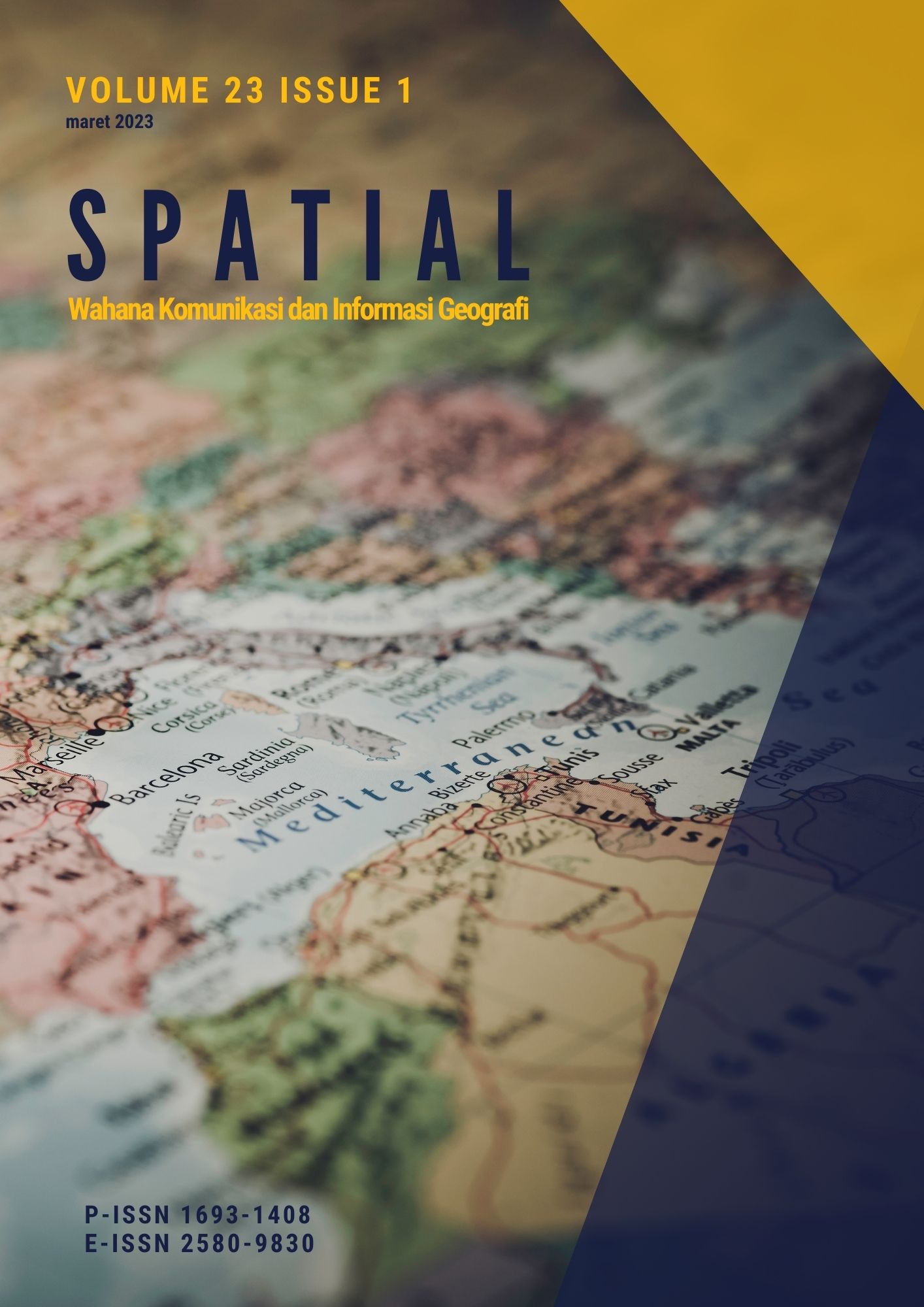Kajian Pengelolaan Pesisir berbasis Tipologi di Kabupaten Tanah Laut
DOI:
https://doi.org/10.21009/spatial.231.010Keywords:
Tipology ;, Coastal Management Strategies;, Protection AdaptationAbstract
The coastal area of Tanah Laut Regency has two different coastal sides, namely the west and south coasts with different typologies on both coasts in terms of physical conditions and community activities. The purpose of this research is to know the typology in the West and South coastal areas of Tanah Laut Regency and the Coastal Management Concept based on coastal typology. The stages of data collection in this study consisted of secondary and primary data. Secondary data uses data from government agencies, studies, and regional planning documents, including data, geology, slope, topography, and satellite imagery for landforms. Based on the results of the analysis, there are 3 types of coastal typology groups, namely Marine Deposition Coast, Sub Aerial Deposition Coast, and Volcanic Coast. Coastal management strategies for the typology of the Sub Aerial Deposition Coast type such as planting mangroves, adaptation of vertical houses and coastal buildings. Meanwhile, the typology of the Volcanic Coast and Marine Deposition Coast is in the form of hard/protective buildings, coastal buildings, seawalls, and groins.
Downloads
Published
How to Cite
Issue
Section
License
An author who publishes in the journal SPATIAL Wahana Komunikasi dan Informasi Geografi agrees to the following terms:
Author retains the copyright and grants the journal the right of first publication of the work simultaneously licensed under the Creative Commons Attribution 4.0 License that allows others to share the work with an acknowledgement of the work's authorship and initial publication in this journal
Author is able to enter into separate, additional contractual arrangements for the non-exclusive distribution of the journal's published version of the work (e.g., post it to an institutional repository or publish it in a book) with the acknowledgement of its initial publication in this journal.
Author is permitted and encouraged to post his/her work online (e.g., in institutional repositories or on their website) prior to and during the submission process, as it can lead to productive exchanges, as well as earlier and greater citation of the published work (See The Effect of Open Access).
This work is licensed under a https://creativecommons.org/licenses/by/4.0/









